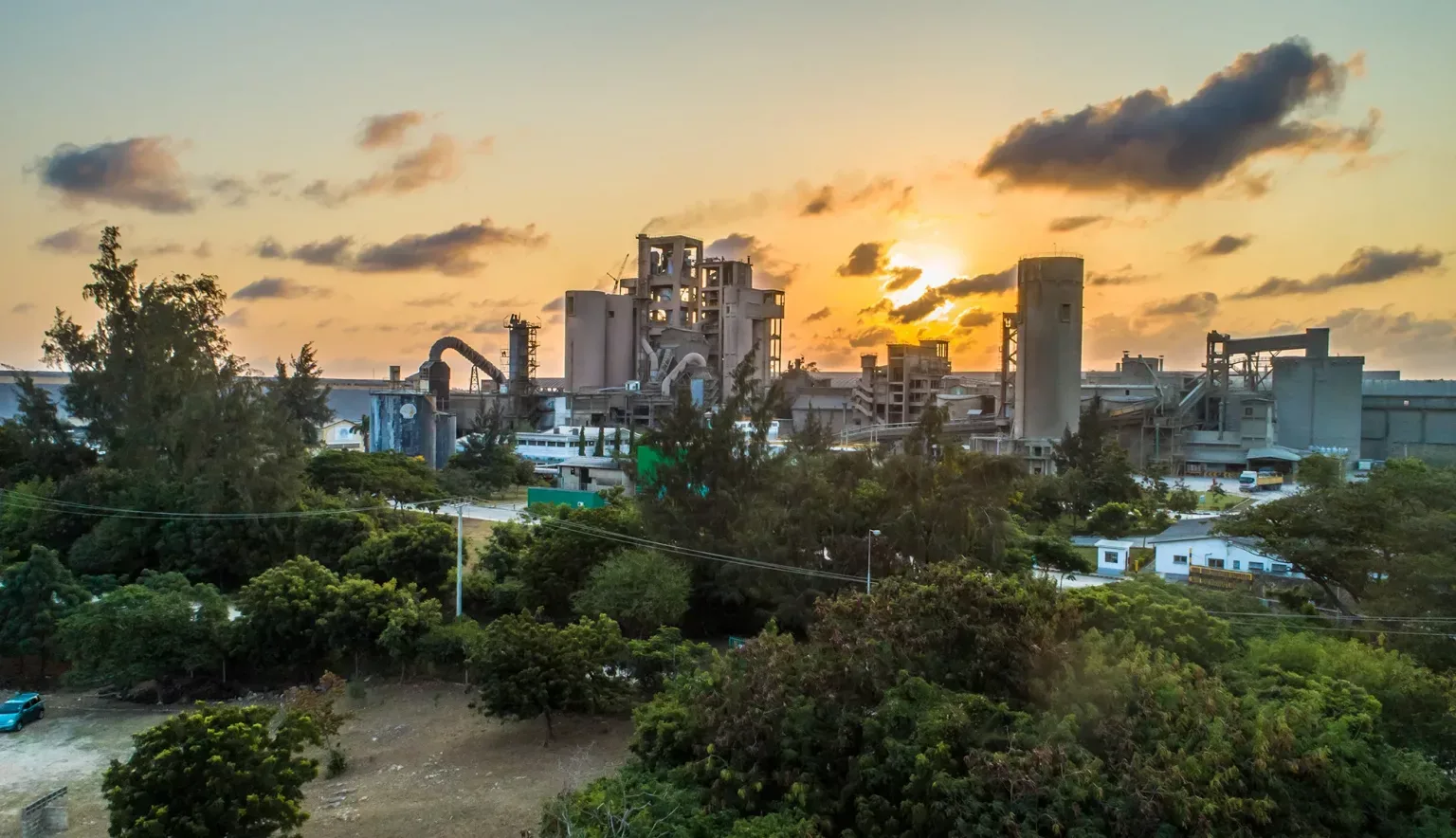THE INFRASTRUCTURE ENABLER
In the eyes of the MD, there is no one simple answer to this question. Rather, it is owed to the company’s inherent desire and ability to excel on four key fronts, the first of which is an unwavering focus on standards.
PROJECTS WITH PURPOSE
It is no secret that, around the world, the manufacturing industry is being placed under heightening pressure to make a fundamental shift towards environmental sustainability. Yet the Kenyan business and its parent company have not shied away from these demands, instead helping to set new standards in the cement sector with a can-do attitude.
“Our focus on sustainability is unmatched in the market,” Hassani expresses, alluding to the recent introduction of LafargeHolcim’s Chief Sustainability Officer position to its Executive Committee as a clear showcase of the company’s environmental ambitions and Bamburi’s own sustainability programmes.
“In our plants, waste materials are recycled and used to support production processes, and beyond that we have dedicated extensive resources to environmental restoration, conservation, education and awareness – a discourse driven by our environmental arm and subsidiary Lafarge Eco Systems.
“We are particularly proud of Haller Park in Mombasa, a world-class example of environmental restoration where a barren landscape and disused quarry were systematically transformed into a diverse ecosystem of flora and fauna, now playing host to a wide range of animals, forests, grasslands and ponds.”
CONTRIBUTING TO COMMUNITIES
Intuitive investment in responsible practices and meaningful products is a theme present throughout the firm’s overall remit.
It is not just a cement producer but a company offering wholesale solutions. In dealing with homebuilders, for example, it not only offers its products, but equally provides the opportunity to access construction funding through partner financial institutions, architectural drawings, bills of quantity, technical assistance and construction advice.
“These challenges excite me – we help people build their dream,” comments the MD.
Meanwhile, its community investment initiatives are likewise both diversified and expansive, the Bamburi Cancer Center located in the Coast General Hospital in Mombasa standing as a different but similarly impactful undertaking.
“A key element to cancer management is supportive care, crucial as it ensures that the quality of life of patients is at an optimal level to improve outcomes. Thus, having a fully-fledged cancer unit is at the core of ensuring patients receive good care.”
Indeed, this is exactly what the Bamburi Cancer Center is delivering.
Since opening in November 2017, the facility has been at the heart of the country’s healthcare system and a best practice showcase. And, in the way of education, Bamburi’s contributions are similarly significant.
Here, the company has for 15 years been running a social marketing programme named Builders Academy that offers tailored training for masons, foremen and small contractors across the country, imparting crucial construction skills in an effort to help tackle emerging industry issues, spur job creation and improve overall construction standards.
And Bamburi also invests in proactive and continuous education of communities on health and safety. Among its programmes is an annual road safety campaign where the company partners with county governments and other public and private partners, including transporters, to sensitise communities to road safety.
“This is concentrated in high risk road networks, and also include training activities for motorcycle riders (locally known as boda boda), school children road safety programs among others,” says Hassani.
EMBRACING KEY COMMUNITIES
Investment into the empowerment of people is not only focused on vulnerable groups. Likewise, Bamburi Cement’s sizeable workforce benefits from the company’s culture which is committed to delivering benefit to all stakeholders.
The broad reach of LafargeHolcim is one way in which this is delivered.
Alongside impeccable health and safety practices and general training, it is able to offer its employees enhanced learnings through exposure to the group’s global operations that can range from best practice sharing across divisions and borders to receiving support from its flagship research centre in Lyon.
“Once we recruit good people, we make sure we provide them with the space to deliver,” states Hassani.
“We recognise that our people and their expertise are central to the solutions we deliver to our customers. They work hard to overcome barriers and solve customer challenges, and this requires both drive and knowhow.
Indeed, the same can be said for Bamburi Cement’s suppliers and business partners that are likewise deemed crucial to the overall success of the company.
The MD affirms: “Reliability is key, and we continue to enhance our relationships with our partners and suppliers in order to operate efficiently and effectively while adhering to the highest standards of integrity.
“Following our supplier code of conduct, we develop long-term relationships with those companies who are also committed to sustainable development. Such engagements are ongoing and in February we hosted our Supplier Week to firm up these partnerships.”
REALISING THE POTENTIAL
Without question, maintaining fruitful relations with suppliers and employees alike will be crucial to Bamburi Cement’s progression as it enters a new, ambitious chapter in its already illustrious history.
The company recently completed a major investment and capacity upgrade at its Athi River grinding plant, significantly increasing its cement production capacity. And Bamburi’s aspirations extend far beyond this, with a number of similarly exciting developments in the pipeline moving forward.
Attentions are currently focused on building a new clinker line, improving the newly launched digital application – a platform that has transformed customer journeys by enabling clientele to place orders, follow up on their status and check balances, payments and deliveries – and expanding its range of cement and concrete products to better meet the construction needs of the region.
“We will be more agile and prepared to adapt to new changes, which are emerging more rapidly today than they have done in previous years,” says Hassani. “We aim to remain a reference point in our industry.”
As talk turns to the future, the MD is also able to outline his optimistic view on the overriding prospects for Africa’s construction sector.
































